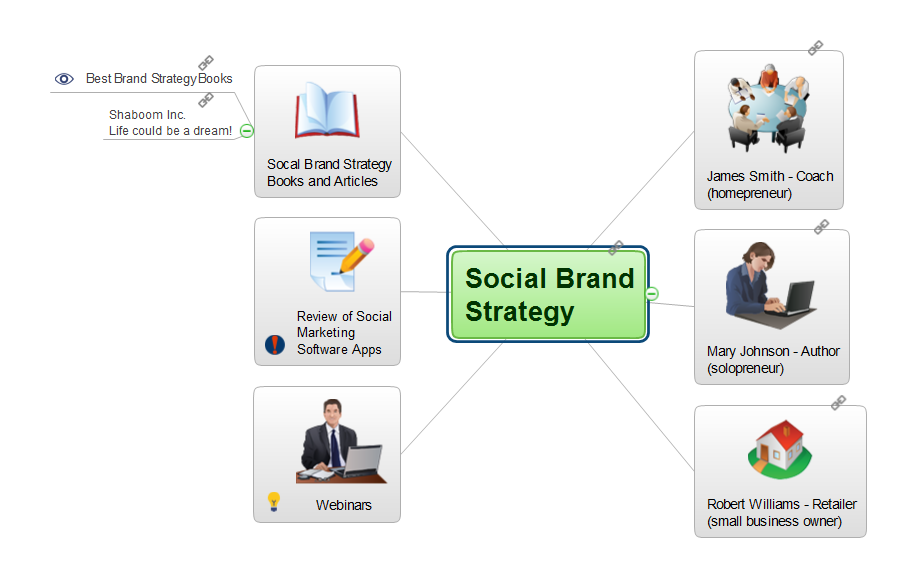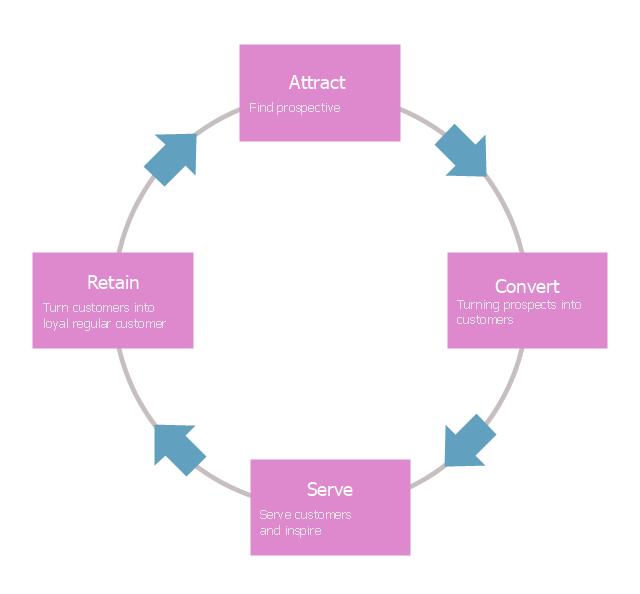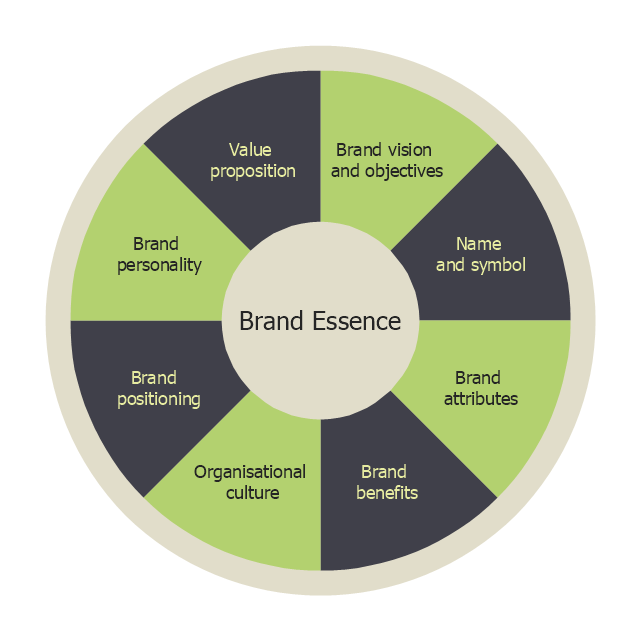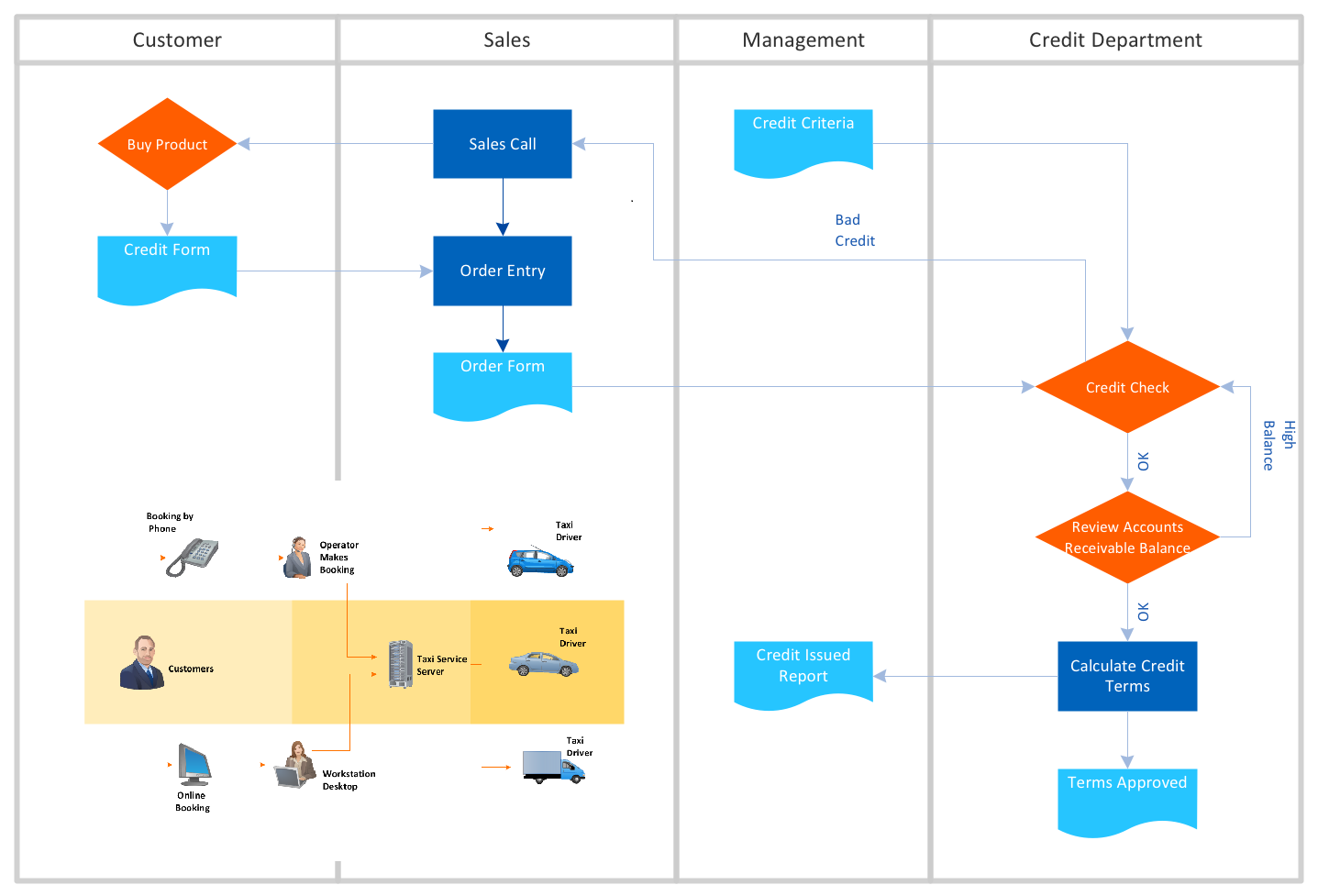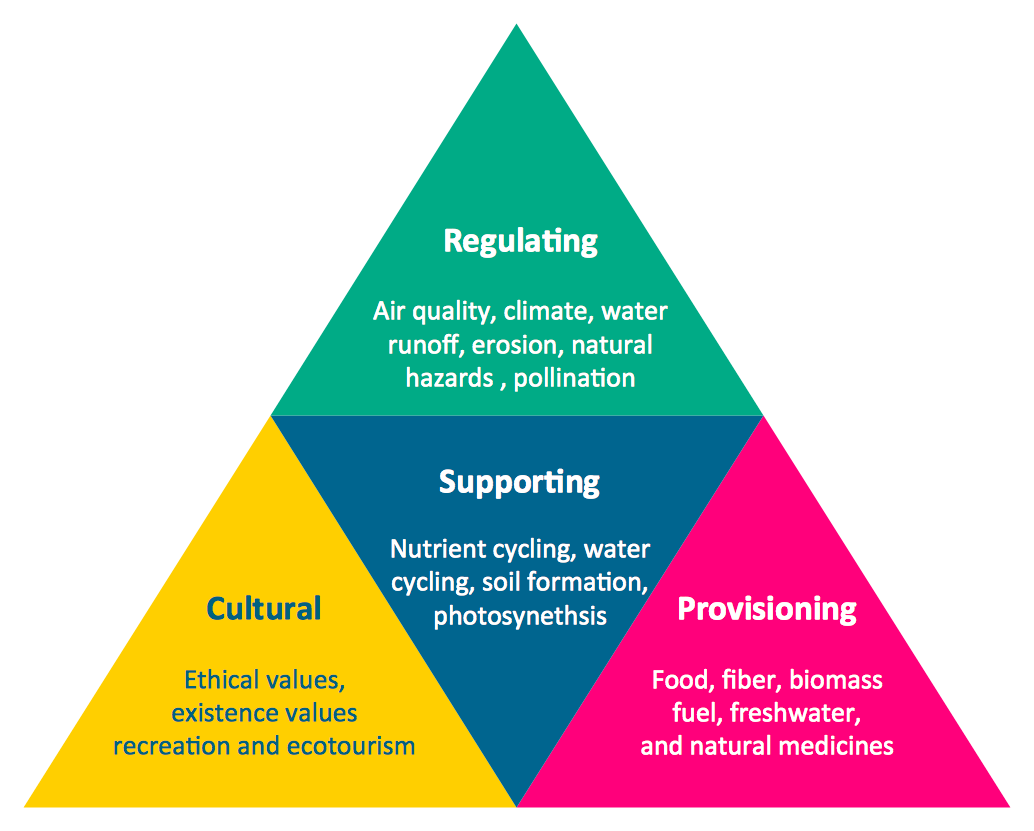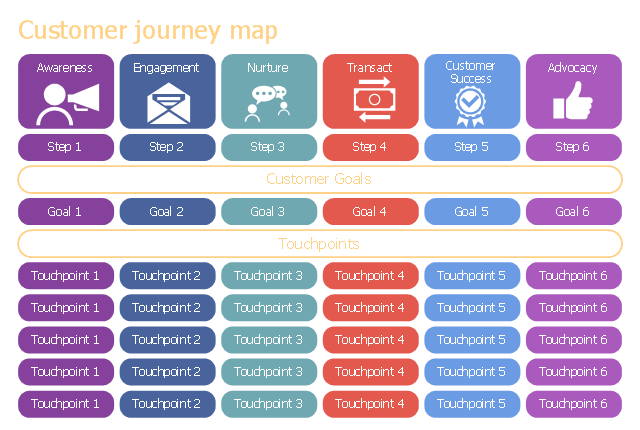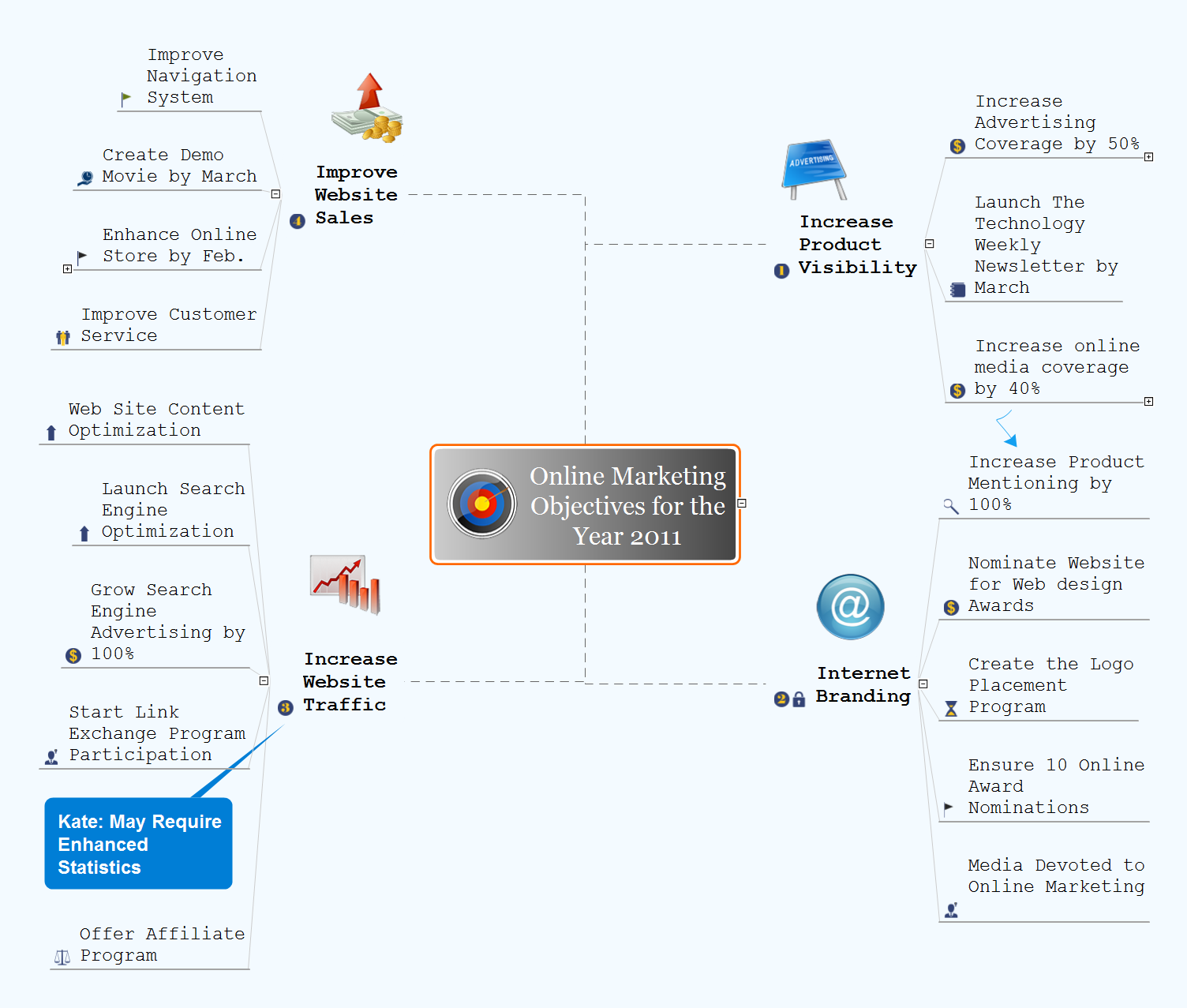"Branding strategies.
Company name.
Often, especially in the industrial sector, it is just the company's name which is promoted...
Individual branding.
Each brand has a separate name ..., which may compete against other brands from the same company...
Attitude branding and iconic brands.
Attitude branding is the choice to represent a larger feeling, which is not necessarily connected with the product or consumption of the product at all. ...
Iconic brands are defined as having aspects that contribute to consumer's self-expression and personal identity. ...
"No-brand" branding.
Recently a number of companies have successfully pursued "no-brand" strategies by creating packaging that imitates generic brand simplicity.
Derived brands.
In this case the supplier of a key component, used by a number of suppliers of the end-product, may wish to guarantee its own position by promoting that component as a brand in its own right.
Brand extension and brand dilution.
The existing strong brand name can be used as a vehicle for new or modified products ...
Social media brands.
social media brands may be the most evolved version of the brand form, because they focus not on themselves but on their users. ...
Multi-brands.
Alternatively, in a market that is fragmented amongst a number of brands a supplier can choose deliberately to launch totally new brands in apparent competition with its own existing strong brand ...
Private labels.
Private label brands, also called own brands, or store brands have become popular. Where the retailer has a particularly strong identity this "own brand" may be able to compete against even the strongest brand leaders ...
Individual and organizational brands.
There are kinds of branding that treat individuals and organizations as the products to be branded. Personal branding treats persons and their careers as brands. ... Faith branding treats religious figures and organizations as brands. ... Nation branding works with the perception and reputation of countries as brands. ...
Crowd sourcing branding.
These are brands that are created by "the public" for the business, which is opposite to the traditional method where the business create a brand. ...
Nation branding (place branding and public diplomacy).
Nation branding is a field of theory and practice which aims to measure, build and manage the reputation of countries ...
Destination Branding.
Destination Branding is the work of cities, states, and other localities to promote to themselves." [Brand. Wikipedia]
The block diagram example "Branding strategies" was created using the ConceptDraw PRO diagramming and vector drawing software extended with the Block Diagrams solution from the area "What is a Diagram" of ConceptDraw Solution Park.
Company name.
Often, especially in the industrial sector, it is just the company's name which is promoted...
Individual branding.
Each brand has a separate name ..., which may compete against other brands from the same company...
Attitude branding and iconic brands.
Attitude branding is the choice to represent a larger feeling, which is not necessarily connected with the product or consumption of the product at all. ...
Iconic brands are defined as having aspects that contribute to consumer's self-expression and personal identity. ...
"No-brand" branding.
Recently a number of companies have successfully pursued "no-brand" strategies by creating packaging that imitates generic brand simplicity.
Derived brands.
In this case the supplier of a key component, used by a number of suppliers of the end-product, may wish to guarantee its own position by promoting that component as a brand in its own right.
Brand extension and brand dilution.
The existing strong brand name can be used as a vehicle for new or modified products ...
Social media brands.
social media brands may be the most evolved version of the brand form, because they focus not on themselves but on their users. ...
Multi-brands.
Alternatively, in a market that is fragmented amongst a number of brands a supplier can choose deliberately to launch totally new brands in apparent competition with its own existing strong brand ...
Private labels.
Private label brands, also called own brands, or store brands have become popular. Where the retailer has a particularly strong identity this "own brand" may be able to compete against even the strongest brand leaders ...
Individual and organizational brands.
There are kinds of branding that treat individuals and organizations as the products to be branded. Personal branding treats persons and their careers as brands. ... Faith branding treats religious figures and organizations as brands. ... Nation branding works with the perception and reputation of countries as brands. ...
Crowd sourcing branding.
These are brands that are created by "the public" for the business, which is opposite to the traditional method where the business create a brand. ...
Nation branding (place branding and public diplomacy).
Nation branding is a field of theory and practice which aims to measure, build and manage the reputation of countries ...
Destination Branding.
Destination Branding is the work of cities, states, and other localities to promote to themselves." [Brand. Wikipedia]
The block diagram example "Branding strategies" was created using the ConceptDraw PRO diagramming and vector drawing software extended with the Block Diagrams solution from the area "What is a Diagram" of ConceptDraw Solution Park.
Social Brand Strategy
In the mind of consumer the brand is a entire image of a product, which is invariably associated with its specific characteristics. Every manufacturer knows about this fact and in conditions of great competition actively applies the brand management, and strives to create unique and memorable brand for a new product appearing on the market. Brand management is carried out at different levels from the corporate brand, family brand to the individual brand. The brand strategy is a methodological tool of brand management, a long term plan of brand's creation and management, systematic brand development to achieve the goals. Brand strategy is built according to the brand's essence and principles of competition. Effective brand management and development of social brand strategy, its realization, implementation and promotion are important, but quite complex tasks. The main goal of brand strategy is to achieve that the brand become an ideal in the minds of consumers and was easily recognizable by them. The social media provide the great assistance in this and help effectively influence the target audience. A visual Mind Map created in powerful ConceptDraw MINDMAP application organizes the research and methods for the social brand strategy.This arrow circle diagram sample was redesigned from the Wikimedia Commons file: Loyalitätskreislauf-klein.jpg. [commons.wikimedia.org/ wiki/ File:Loyalit%C3%A4tskreislauf-klein.jpg]
This file is licensed under the Creative Commons Attribution-Share Alike 3.0 Unported license. [creativecommons.org/ licenses/ by-sa/ 3.0/ deed.en]
"Loyalty marketing is an approach to marketing, based on strategic management, in which a company focuses on growing and retaining existing customers through incentives. Branding, product marketing and loyalty marketing all form part of the customer proposition - the subjective assessment by the customer of whether to purchase a brand or not based on the integrated combination of the value they receive from each of these marketing disciplines.
The discipline of customer loyalty marketing has been around for many years...
In recent years, a new marketing discipline called "customer advocacy marketing" has been combined with or replaced "customer loyalty marketing." " [Loyalty marketing. Wikipedia]
The arrow circle diagram example "Loyalty" was created using the ConceptDraw PRO diagramming and vector drawing software extended with the Target and Circular Diagrams solution from the Marketing area of ConceptDraw Solution Park.
www.conceptdraw.com/ solution-park/ marketing-target-and-circular-diagrams
This file is licensed under the Creative Commons Attribution-Share Alike 3.0 Unported license. [creativecommons.org/ licenses/ by-sa/ 3.0/ deed.en]
"Loyalty marketing is an approach to marketing, based on strategic management, in which a company focuses on growing and retaining existing customers through incentives. Branding, product marketing and loyalty marketing all form part of the customer proposition - the subjective assessment by the customer of whether to purchase a brand or not based on the integrated combination of the value they receive from each of these marketing disciplines.
The discipline of customer loyalty marketing has been around for many years...
In recent years, a new marketing discipline called "customer advocacy marketing" has been combined with or replaced "customer loyalty marketing." " [Loyalty marketing. Wikipedia]
The arrow circle diagram example "Loyalty" was created using the ConceptDraw PRO diagramming and vector drawing software extended with the Target and Circular Diagrams solution from the Marketing area of ConceptDraw Solution Park.
www.conceptdraw.com/ solution-park/ marketing-target-and-circular-diagrams
"Brand essence is a phrase that communicates the fundamental nature of a trade name associated with one or more products made by the same company. A business marketing team will often spend considerable time developing effective ways of expressing the brand essence of their company's various brands by highlighting the unique benefits provided that pertain to the values of its target subculture." [businessdictionary.com/ definition/ brand-essence.html]
Brand essence model diagram visually display key points of brand essence in easy to understand form.
The example of wheel diagram (ring diagram, bevel style circle diagram) "Brand essence model" was created using the ConceptDraw PRO diagramming and vector drawing software extended with the Target and Circular Diagrams solution from the Marketing area of ConceptDraw Solution Park.
www.conceptdraw.com/ solution-park/ marketing-target-and-circular-diagrams
Brand essence model diagram visually display key points of brand essence in easy to understand form.
The example of wheel diagram (ring diagram, bevel style circle diagram) "Brand essence model" was created using the ConceptDraw PRO diagramming and vector drawing software extended with the Target and Circular Diagrams solution from the Marketing area of ConceptDraw Solution Park.
www.conceptdraw.com/ solution-park/ marketing-target-and-circular-diagrams
Flowchart Maker
A flowchart maker is a software showing the interaction, sequence or organization. It also known as flowchart maker or ConceptDraw DIAGRAM standard supplied with different types of symbol collections: standard symbols, branded set and authored. It used strictly for enhancing scientific or business documents with abstract explanatory pictures. Business graphic applications show a special knowledge representations and include many features for creating schematic pictures. These graphic tools are known as flowchart maker or flowchart maker software."Brand awareness refers to customers' ability to recall and recognize the brand under different conditions and link to the brand name, logo, jingles and so on to certain associations in memory. It consists of both brand recognition and brand recall. It helps the customers to understand to which product or service category the particular brand belongs and what products and services are sold under the brand name. It also ensures that customers know which of their needs are satisfied by the brand through its products (Keller). Brand awareness is of critical importance since customers will not consider your brand if they are not aware of it. There are various levels of brand awareness that require different levels and combinations of brand recognition and recall. Top-of-Mind is the goal of most companies. Top-of-mind awareness occurs when your brand is what pops into a consumers mind when asked to name brands in a product category." [Brand. Brand awareness. Wikipedia]
This top brand model pyramid diagram was redesigned using the ConceptDraw PRO diagramming and vector drawing software from Wikimedia Commons file Diagram Top Brand Model.jpg. [commons.wikimedia.org/ wiki/ File:Diagram_ Top_ Brand_ Model.jpg]
This file is licensed under the Creative Commons Attribution-Share Alike 3.0 Unported license. [creativecommons.org/ licenses/ by-sa/ 3.0/ deed.en]
The example "Top brand model pyramid diagram" is included in the Pyramid Diagrams solution from the Marketing area of ConceptDraw Solution Park.
This top brand model pyramid diagram was redesigned using the ConceptDraw PRO diagramming and vector drawing software from Wikimedia Commons file Diagram Top Brand Model.jpg. [commons.wikimedia.org/ wiki/ File:Diagram_ Top_ Brand_ Model.jpg]
This file is licensed under the Creative Commons Attribution-Share Alike 3.0 Unported license. [creativecommons.org/ licenses/ by-sa/ 3.0/ deed.en]
The example "Top brand model pyramid diagram" is included in the Pyramid Diagrams solution from the Marketing area of ConceptDraw Solution Park.
Pyramid Chart Examples
Pyramid Charts and Triangle Diagrams are used to visually structure the topics and progressively order the quantitative data. They allow to illustrate hierarchical structure of the topics, proportional, interconnected and containment relations among the topics. The multilevel Pyramids and Triangle diagrams are constructed oriented up or down and divided into several horizontal slices. They are effectively used to represent marketing strategies, social strategies, information systems, market value, etc., to illustrate presentations, websites, documents, reports in business, finances, sales, management, marketing, media, training, consulting, and many other fields. To maximize the efficiency in drawing the Pyramid Charts, use the ConceptDraw DIAGRAM diagramming and vector drawing software extended with Pyramid Diagrams solution from Marketing area, which contains the set of Pyramid Chart examples, samples, templates and vector design elements of triangular diagrams and pyramids with different quantity of levels for various needs.Use this CJM template for customer journey mapping with ConceptDraw DIAGRAM software.
"Digital customer journey.
Since the rise of the World Wide Web and smartphone applications, there are many more touch points from new content serving platforms (Facebook, Twitter, YouTube etc.), individual online presences (such as websites, forums, blogs, etc.) and dedicated smartphone applications.
As a result, this process has become a type of "journey":
1. The number of brands does not decrease during the process of evaluating and purchasing a product.
2. Brands not taken into account in the "awareness" stage may be added during the evaluation or even purchase stage.
3. Following the post-purchase stage, there is a return to the first step in the process, thus feeding the brand awareness.
In relation to customers and the channels which are associated with sales, these are multichannel in nature. Due to the growth and importance of social media and digital advancement, these aspects need to be understood by businesses to be successful in this era of customer journeys. With tools such as Facebook and Twitter having such prominence, there is a constant stream of data that needs to be analysed to understand this journey. Business flexibility and responsiveness is vital in the ever-changing digital customer environment, as customers are constantly connected to businesses and their products. Customers are now instant product experts due to various digital outlets and form their own opinions on how and where to consume products and services. Businesses use customer values and create a plan to gain a competitive advantage. Businesses use the knowledge of customers to guide the customer journey to their products and services.
Due to the shift in customer experience, in 2014 Wolny & Charoensuksai highlight three behaviours that show how decisions can be made in this digital journey. The Zero Moment of truth is the first interaction a customer has in connection with a service or product. This moment affects the consumer's choice to explore a product further or not at all. These moments can occur on any digital device. Showrooming highlights how a consumer will view a product in a physical store but then decide to exit the store empty handed and buy online instead. This consumer decision may be due to the ability to compare multiple prices online. On the opposing end of the spectrum is webrooming. Consumers will research about a product online in regards to quality and price but then decide to purchase in store. These three channels need to be understood by businesses because customers expect businesses to be readily available to cater to their specific customer needs and purchasing behaviours." [Customer experience. Wikipedia]
The CJM template "Customer journey" is included in Customer Journey Mapping solution from Marketing area of ConceptDraw Solution Park.
"Digital customer journey.
Since the rise of the World Wide Web and smartphone applications, there are many more touch points from new content serving platforms (Facebook, Twitter, YouTube etc.), individual online presences (such as websites, forums, blogs, etc.) and dedicated smartphone applications.
As a result, this process has become a type of "journey":
1. The number of brands does not decrease during the process of evaluating and purchasing a product.
2. Brands not taken into account in the "awareness" stage may be added during the evaluation or even purchase stage.
3. Following the post-purchase stage, there is a return to the first step in the process, thus feeding the brand awareness.
In relation to customers and the channels which are associated with sales, these are multichannel in nature. Due to the growth and importance of social media and digital advancement, these aspects need to be understood by businesses to be successful in this era of customer journeys. With tools such as Facebook and Twitter having such prominence, there is a constant stream of data that needs to be analysed to understand this journey. Business flexibility and responsiveness is vital in the ever-changing digital customer environment, as customers are constantly connected to businesses and their products. Customers are now instant product experts due to various digital outlets and form their own opinions on how and where to consume products and services. Businesses use customer values and create a plan to gain a competitive advantage. Businesses use the knowledge of customers to guide the customer journey to their products and services.
Due to the shift in customer experience, in 2014 Wolny & Charoensuksai highlight three behaviours that show how decisions can be made in this digital journey. The Zero Moment of truth is the first interaction a customer has in connection with a service or product. This moment affects the consumer's choice to explore a product further or not at all. These moments can occur on any digital device. Showrooming highlights how a consumer will view a product in a physical store but then decide to exit the store empty handed and buy online instead. This consumer decision may be due to the ability to compare multiple prices online. On the opposing end of the spectrum is webrooming. Consumers will research about a product online in regards to quality and price but then decide to purchase in store. These three channels need to be understood by businesses because customers expect businesses to be readily available to cater to their specific customer needs and purchasing behaviours." [Customer experience. Wikipedia]
The CJM template "Customer journey" is included in Customer Journey Mapping solution from Marketing area of ConceptDraw Solution Park.
 Block Diagrams
Block Diagrams
Block diagrams solution extends ConceptDraw DIAGRAM software with templates, samples and libraries of vector stencils for drawing the block diagrams.
Online Marketing Objectives
Promotion and sale of goods or services, as well as the conquest of free niche on the market in a given category include numerous methods directed on the advertising the products and attraction attention of potential buyers. Among them are traditional methods of struggle for the buyer, as well as internet marketing or online marketing, that is a complex of measures aimed at attraction of clients using the online technologies. The main tool of online marketing is a website of the company. The proper preparation and promotion of website ensure to the owner the opportunity to successfully compete with manufacturers of similar products, ensuring the high sales. Today each manufacturer, regardless of the size and direction of activities, creates a website, online store, blog, pages in social networks that give the visitors full information about the company, its products and services. Given the fact that a potential buyer spends a lot of time at the Internet, such strategy is justified and the practice shows a high efficiency of online marketing. ConceptDraw MINDMAP helps to illustrate a value of outline marketing on a Mind Map, to represent the online marketing objectives for a company and to specify the targets outlined for each of these objectives.- Block diagram - Branding strategies | Marketing mix - Wheel ...
- Block diagram - Branding strategies | Competitor Analysis ...
- Block diagram - Branding strategies | Block diagram - Porter's five ...
- Block diagram - Branding strategies | Brand essence model - Wheel ...
- Block diagram - Branding strategies | Pyramid Chart Examples ...
- Block diagram - Branding strategies | Block Diagrams | Marketing ...
- Social Brand Strategy | Pyramid Chart Examples | Block diagram ...
- Fishbone Diagrams | Stakeholder Onion Diagrams | Block diagram ...
- Branding Mind Map
- Block diagram - Branding strategies | Marketing Diagrams ...

